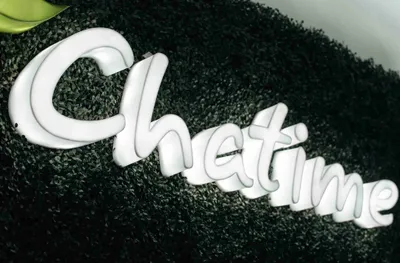Have you noticed? The 90s are everywhere.
From the resurgence of baggy jeans and chunky sneakers to the revival of grunge music on streaming playlists, the decade that gave us dial-up internet and Tamagotchis has firmly planted itself back in the cultural spotlight.
It is also my coming-of-age decade, so I can’t help but have mixed feelings about this trend :)
The most successful nostalgia marketing campaigns tap into something far more profound: the human need for comfort, familiarity, and connection to happier times.
For brands looking to cut through digital noise, the 90s revival offers a masterclass in emotional branding that speaks to both millennials who lived through the decade and Gen Z consumers who romanticize an era they never experienced.
Why Nostalgia Marketing Works
Nostalgia marketing succeeds because it triggers powerful psychological responses that go far beyond simple brand recognition. In the light of global crises, such as the pandemic, followed by inflation, consumers are leaning on nostalgic brands to remind them of good times, and for reassurance regarding quality and taste.
The emotional pull of nostalgia offers brands a shortcut to trust and affection. Memory empowers people, and in select markets, such as the food and drink industry, a significant amount of consumers enjoy things that remind them of their past, making nostalgia, or the sentimental longing for the good times of an idealised past, a strong selling point.
What makes 90s nostalgia particularly powerful is its cross-generational appeal. For millennials, these products represent genuine childhood memories and the desire to recapture the uncomplicated joy of youth.
For Gen Z, nostalgia permeates every part of our social fabric — content (Stranger Things), fashion (NewJeans and their late 90s Y2K aesthetic), streetwear and sneakers (retro Jordans, New Balance dad shoes), offering an authentic alternative to the carefully curated world of social media.
The 90s Revival Across Industries
The resurgence of 90s fashion trends, such as oversized denim jackets and chunky sneakers, has been driven by brands like Nike, Levi’s, and Adidas tapping into nostalgia marketing.
The recent collaboration between Nike and Levi’s represents the peak of this trend, bringing together sportswear and lifestyle fashion, blending both brands’ legacies to reimagine iconic pieces through the lens of heritage and innovation.
The food industry has produced some of the most successful nostalgia marketing campaigns. General Mills’ Dunkaroos comeback story represents the ultimate 90s revival success.
After years of fan campaigns demanding their return, the brand officially brought back Dunkaroos with the most requested flavor: Vanilla Cookies and Vanilla Frosting with Rainbow Sprinkles.
The Dunkaroos relaunch wasn’t just about bringing back a discontinued snack — it was about tapping into a collective cultural moment. The brand threw it back to a time of neon colors and childhood lunch boxes, complete with the original vibrant logo and packaging.
Since the successful relaunch, the line has expanded to include pancake mix, sugar cookie mix, and frosting, proving that successful nostalgia marketing can evolve beyond simple product resurrections.
In 2024, Coca-Cola and Oreo partnered on two limited-edition products: an Oreo Coca-Cola Sandwich Cookie and a Coca-Cola Oreo Zero Sugar beverage.
This collaboration was built upon the nostalgic appeal of both brands while creating something entirely new, tapping into memories of childhood treats and soda fountain experiences while demonstrating how heritage brands can combine their legacies to create buzz-worthy products.
Yet the industry that has perhaps most successfully capitalized on 90s nostalgia is entertainment, with streaming platforms investing heavily in reboots, remakes, and sequels to beloved 90s properties.
From the massive success of “Stranger Things” to the recent “Barbie” movie phenomenon that brought back childhood memories for millions, entertainment companies understand that nostalgia isn’t just a marketing tool — it’s content strategy.
The Marketing Strategies Behind the Trend
The success of 90s nostalgia marketing relies on several key strategic elements that smart brands have mastered across industries.
Limited-edition drops create artificial scarcity that drives excitement and urgency, transforming routine shopping trips into treasure hunts for coveted retro products.
Platforms like Instagram, TikTok, and Pinterest have made nostalgia more accessible and shareable. Social media campaigns amplify the nostalgia effect exponentially, with users eagerly sharing “throwback hauls” and unboxing videos, creating organic content that reaches far beyond traditional advertising audiences.
Collaborations between heritage brands, like the Nike x Levi’s partnership, demonstrate how nostalgic brands can combine their legacies to create products that feel both familiar and fresh.
These partnerships often feel more genuine than traditional advertising because they represent authentic cultural convergence.
Point-of-sale nostalgia extends the experience beyond the product itself. Retailers create dedicated “throwback” sections with vintage-inspired displays that recreate the aesthetic of 90s shop shelves, turning the purchasing environment into part of the nostalgic experience.
Risks & Challenges of Nostalgia Marketing
Despite its effectiveness, nostalgia marketing carries significant risks that brands must carefully navigate.
Over-reliance on retro appeals can signal a lack of innovation and forward-thinking, potentially positioning brands as outdated rather than classic. The novelty of nostalgic products can wear off quickly if not supported by genuine product quality and ongoing brand evolution.
Consumers are increasingly sophisticated about marketing tactics and can quickly identify inauthentic attempts to exploit emotional connections. Brands that rely purely on superficial aesthetic changes without delivering genuine value risk damaging their credibility and losing consumer trust.
The popularity of nostalgia marketing also creates increased competition for consumer attention. As more brands tap into the same cultural touchstones, the marketplace becomes saturated with retro appeals, potentially leading to consumer fatigue and diminished effectiveness of nostalgic campaigns.
What Brands Can Learn
The most successful nostalgia marketing campaigns strike a careful balance between honoring the past and addressing present-day consumer needs.
Simply recreating old products isn’t enough; brands must find ways to blend retro appeal with modern relevance, whether through updated formulations, contemporary design elements, or evolved brand messaging.
Authentic storytelling consistently outperforms superficial aesthetic tweaks. Brands that can articulate genuine connections between their heritage and contemporary values create stronger emotional bonds than those that simply rely on visual nostalgia.
The story behind the comeback often matters more than the comeback itself.
The best practice emerging from successful 90s revivals involves remixing classic elements with modern innovations.
This might mean offering retro flavors with healthier formulations, combining vintage aesthetics with sustainable materials, or pairing nostalgic products with contemporary consumption occasions that reflect how lifestyles have evolved.
Cross-industry collaborations show how brands can amplify their nostalgic appeal by partnering with other heritage brands that share similar cultural cache.
These collaborations create products that feel both familiar and unprecedented.
Looking forward, the future of nostalgia marketing may be less about literal recreations of bygone eras and more about how brands can creatively remix cultural elements from the past to address present-day needs and desires.
The 90s revival has taught us that the most powerful marketing doesn’t just sell products — it sells feelings, memories, and the promise that some things never go out of style.


